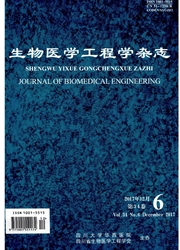

 中文摘要:
中文摘要:
我们利用基于扫描隧道显微镜的原子力显微镜对纳米金基因芯片在不同检测阶段表面原子排列构象的变化状况进行扫描研究。结果显示芯片片基(醛基玻片)表面原子呈现规律的多孔状排列;结合探针后,多孔状的规律排列改变,呈现参差不齐;与目标核酸杂交后,表面原子又呈现出相对规整的、密集交叉平行的条索状排列。但银染后导致表面原子出现较大的高突起的聚团块状结构,排列严重的参差不齐。从这些结果我们可以直观地感知到芯片表面探针结合、核酸杂交、银染显色的过程和差异,也可以从微观层面上对相关的实验进行验证。
 英文摘要:
英文摘要:
Conformations of surface atoms in various stages of nanogold-based genechip testing were scanned by the atomic force microscope based on the scanning tunneling microscope. The findings were: First, the surface atoms of genechip slide (formylphenyl glass) were in a regular porous-arrangement; Second, after combination with probe, the regular porous arrangement changed to be irregular; Third, after hybridization with the target nucleic acid, the surface atoms were once again in a cable-like arrangement which was relatively structured and intensively cross-parallel. However, after the silver staining, the surface atoms showed a larger block structure with serious unevenness. From these results we can intuitively know the process and differences in probe combination, nucleic acid hybridization, and silver staining. Moreover, the relevant experiment was verified at the micro-level.
 同期刊论文项目
同期刊论文项目
 同项目期刊论文
同项目期刊论文
 期刊信息
期刊信息
